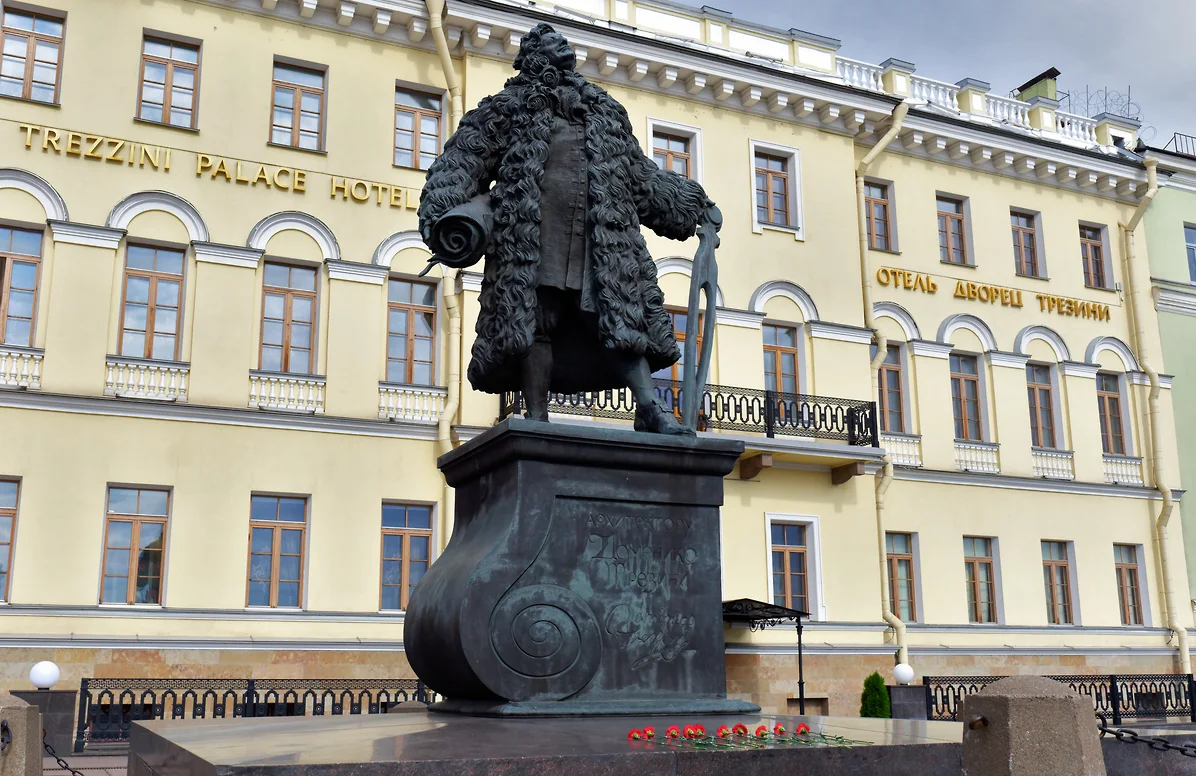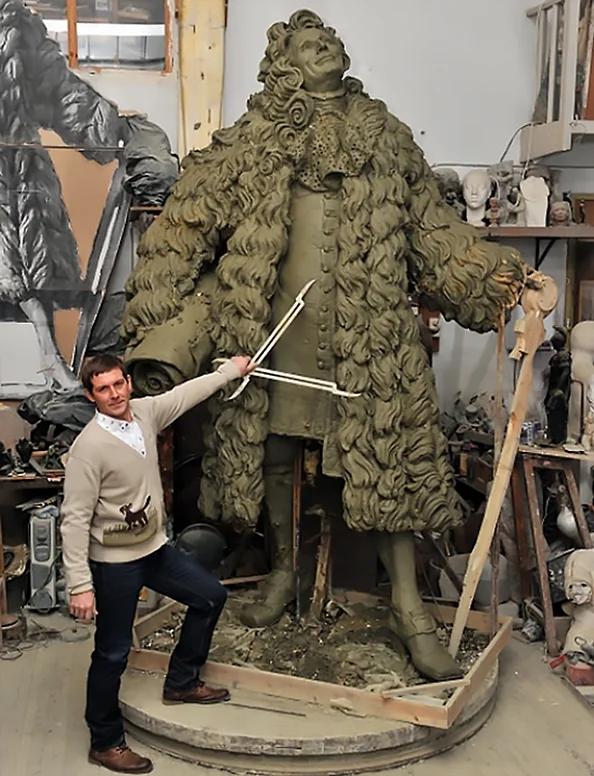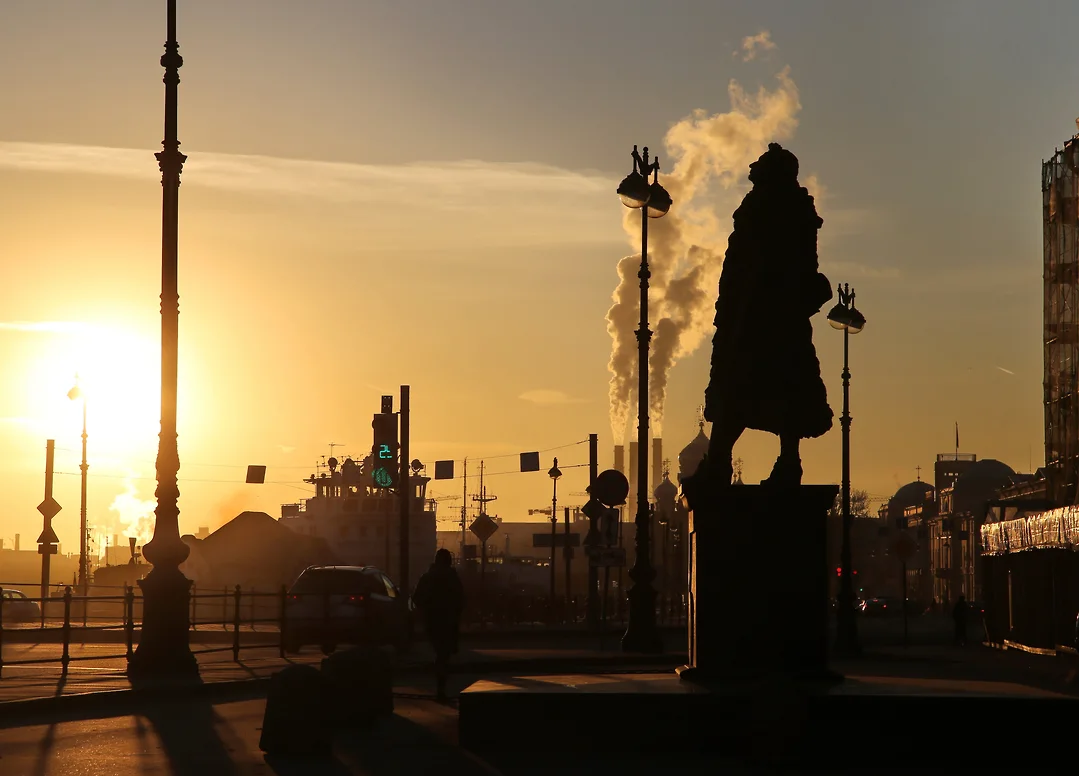On February 19, 2014, a monument to Domenico Trezzini, designed by sculptor Pavel Ignatiev and architect Pavel Bogryantsev, was unveiled on Vasilievsky Island, opposite the Blagoveshchensky (Annunciation) Bridge. The monument is unique in many of its aspects.

Photo by Alexey Smagin / Kommersant.
The bronze Trezzini stands in the square bearing his name, adjacent to the Trezzini Palace Hotel, which is owned by the entities of businessman Yevgeny Prigozhin, who passed away in the summer of 2023.
Until the 1990s, the city authorities did not commemorate the Italian architect — there was not a single monument or even a memorial plaque in honor of the first and chief architect of St. Petersburg. It was Trezzini who defined the European appearance of the city, one of the most beautiful in the world. The square, now named after the architect, was previously part of the University Embankment, and his house, which has since become a hotel, was a residential building. It was only in 1999 that Vladimir Yakovlev, then the governor of St. Petersburg, signed an order to create a monument to Trezzini. Coincidentally, by that time, his project was essentially complete. At that time, the then-unknown future sculptor and restorer Pavel Ignatiev, a student of Anikushin, became interested in the theme of Peter the Great Baroque, and his thesis at the Academy of Arts was titled «Monument to the first architect of St. Petersburg, Domenico Trezzini». It was from this work that a large project emerged in the future. However, the monument itself only appeared 15 years later. The reason is simple: there were no funds. In the end, the financing was undertaken by the Jorno Foundation. Its chairman, Yuri Zhorno, is a philanthropist who provides financial support for the creation and preservation of historical, cultural, and architectural objects.

Pavel Ignatiev. Photo: Academy of Arts / vk.com.
Pavel Ignatiev was born in 1973 in Leningrad and is the successor of a creative dynasty. His parents are artists, and his grandparents are sculptors. Today, Ignatiev from St. Petersburg is known as the author of the statue of Academician Likhachev in the building of the Twelve Colleges, the bust of Professor Maxim Kovalevsky at St. Petersburg State University, memorial plaques to writer Evgeny Schwartz and ballerina Galina Ulanova, among other works. He studied architectural heritage, worked extensively as a restorer, wrote a PhD thesis on «Monumental and monumental-decorative sculpture in Art Nouveau architecture in St. Petersburg», and is a member of the jury of the Golden Trezzini Awards.
The monument was first shown to experts in May 2012. Pavel Ignatiev stated that all the specialists of the Urban Planning Council had known about this project for a long time and treated it kindly; the adjustments were professional and minor. The height of the monument is 5.5 meters. It was cast at a foundry in the Moscow region, assembled there, and then transported to St. Petersburg by truck. The sculptor depicted Trezzini as a robust man in an open fur coat, with a roll of drawings in one hand and leaning on a construction compass with the other. The architect looks upwards and appears to be smiling. The unusual expressiveness of the sculpture and the pedestal in the form of a volute — a detail of a column — were innovative.
«When the first sketch was made, I thought of placing the monument on Trinity Field,» Pavel Ignatiev said in one of his interviews. «The reason for the tilted head is that he is standing and looking at the top of the bell tower of the Peter and Paul Cathedral, which is 122 meters high.»
As the famous literary critic and art historian, Mikhail Zolotonosov, wittily noted, «Trezzini left two absolute landmarks of St. Petersburg: the bell tower of the Peter and Paul Cathedral and the building of the Twelve Colleges. The pose with his head thrown back seems to say, 'Here you go! Wow, it turned out!'».

Photo by Pavel Karavashkin / Kommersant.
By the way, monuments have not been adorned with fur coats yet. It is clear that Trezzini, originally from Ticino — an Italian canton of Switzerland, was unaccustomed to Russian frosts, and his fur coat was robust, presumably bearish, with exuberant «fur» curls. Although the author of the sculpture noted: «Trying to make a sheepskin coat out of a lion's mane is not a challenge.» The original relief on the volute also posed a challenge to the usual pretentious bas-reliefs on the pedestals of monuments: Trezzini rides a donkey from his village of Astano on a long journey through Europe to Russia, where he was destined to become the first architect of the new capital.
The grand opening of the monument on February 19, 2014, was attended by its authors, members of the government of St. Petersburg, and representatives of the Consulates General of Switzerland and Italy. «To the accompaniment of a brass band, actors portraying Domenico Trezzini and Emperor Peter I appeared on the site in front of the monument,» RIA Novosti described the event. «Wrapped in a fur coat, Trezzini promised to 'dress in stone' the wooden buildings of the Northern capital, and Peter I solemnly invited him to serve.» The right to remove the veil was granted to seventh-grader Ksenia Alexandrova, who became the winner of the «Trezzini, Rediscovered» competition.
Text by Elena Fedotova, Kommersant Newspaper
More news of the Golden Trezzini Awards:
https://goldtrezzini.ru/en/news/
Follow us on social media:
https://www.facebook.com/trezziniawards/
https://www.instagram.com/trezziniawards/